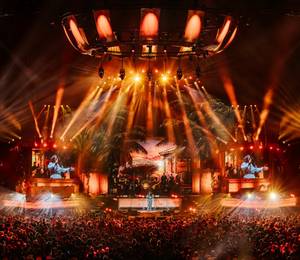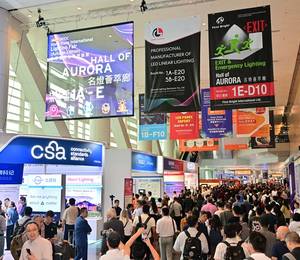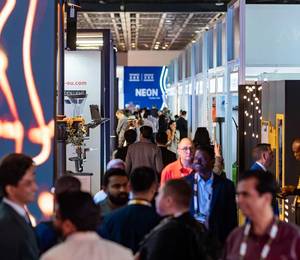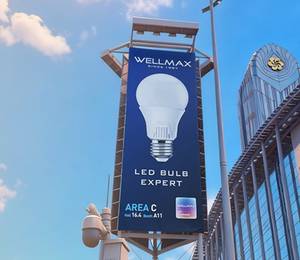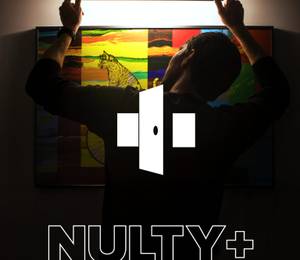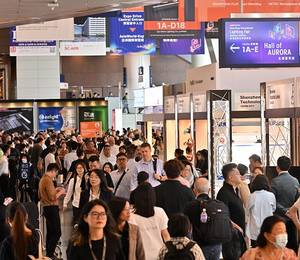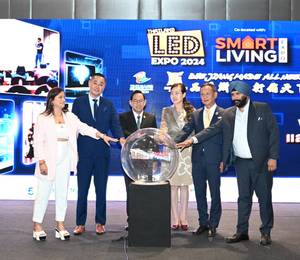Photo 1: Zumtobel and Amstein + Walthert are showcasing the office of the future in a smart building environment in the Andreasturm office building in Zurich. It combines future digital applications such as asset tracking, improvement of the quality of indoor spaces and optimum utilisation of workstations based on sensors, thereby also improving building management.
Photo 2: For the showcase, Zumtobel provided 19 high-quality EPURIA free-standing LED luminaires – all equipped with an integrated presence and brightness sensor and wirelessly controlled via Wireless IoT Mesh based on Bluetooth. In addition, six air quality sensors and a gateway were installed and integrated into the network.
Photo 3: An asset tracking function enables office equipment such as flip charts and projectors to be located quickly. It is also possible to set up an indoor navigation system that allows people to find their way quickly and easily in an unfamiliar environment.
Photo 4: Employees benefit from an optimal work environment and convenient digital applications such as workplace reservation via app. Building owners and managers can operate with increased energy efficiency and cost savings.
Smart light for customised office areas.
When it comes to offices, many companies are asking questions like: Do we still really need so much space? Can the power consumption be optimised? And what do employees need in order to be able to concentrate on their work and generally feel good? A joint showcase project in the Andreasturm in Zurich by Zumtobel and Amstein + Walthert, one of Switzerland’s largest consulting and engineering companies, provides some answers. It brings together both partners’ expertise along the value creation chain of an office building, including the surveying of existing building data, the project design and implementation of the lighting and technical infrastructure, and the continuous analysis and improvement of processes.
“We want to learn more about the opportunities offered by the Internet of Things (IoT) for office management,” says Ian Abegglen, Sales Consultant End User Digital/IoT & Finance Services at Zumtobel in Switzerland. “The aim is to integrate the right infrastructure into an existing lighting system, cost-effectively and quickly – for the benefit of building owners, tenants and operators.”
To this end, Zumtobel provided 19 high-quality EPURIA free-standing LED luminaires – all equipped with an integrated presence and brightness sensor and wirelessly controlled via Wireless IoT Mesh based on Bluetooth. In addition, six air quality sensors and a gateway were installed and integrated into the network. With the help of the gateway, the luminaire and sensor data are transmitted to a cloud-based monitoring and analysis dashboard that can be used to evaluate and analyse the acquired data at a glance. The dashboard uses a cloud-based IoT platform from Axonize, which Zumtobel calls the Smart Building Platform. Three asset tags also enable physical goods such as flip charts or printers to be identified and located.
Improving the quality of indoor spaces with sensors
Air quality in the office has been extremely important since long before the pandemic. It also makes sense from the employer’s viewpoint to ensure, literally, that there is a good atmosphere: employees will feel good and perform at their best in rooms that are pleasantly ventilated. With the help of Zumtobel air quality sensors, Amstein + Walthert can now measure CO2 content, air humidity and temperature as well as VOC values. The latter refer to the levels of volatile organic compounds in the air, which may be emitted by cleaning products, paints or adhesives, for example. The system sends an alert when certain limits are exceeded or not reached, and action is required.
A real-life example shows that smart building monitoring pays off, particularly when it comes to employee health. “After a large-scale cleaning of the building, the VOC values were too high – and we were able to search for the cause together with the cleaning service provider,” says Ralph Schmid, Senior Project Manager Consulting Real Estate/Facility Management at Amstein + Walthert. Thanks to the documented increase in the system, it was possible to ventilate quickly and remove the unwanted vapours. In short: “Smart building monitoring also allows us to identify environmental factors that you can’t see, smell or perceive directly.”
Getting the best use out of workplaces
With home office regulations still in place at many companies, it is no longer the norm for all employees to be in the office at all times. The EPURIA luminaires from Zumtobel serve as sensors and data points. They automatically detect presence and ambient light and dynamically adapt their light output accordingly. This not only saves energy, but also provides Amstein + Walthert with information about which areas are frequented how often: a database that can be used to reliably estimate future space requirements and to increase the efficiency of spaces.
“Demand is coming particularly from companies who need a lot of space for their employees,” says Ian Abegglen from Zumtobel. “The current rule of thumb is that 0.8 desks are needed per employee. Due to increased digitalisation and established home office concepts, this has changed significantly. Now companies need to find out how much space they actually need in the light of these new work models. Our surveys help them decide whether and how they will use their office areas in the future.”
Data as the starting point for further applications
Using the smart building infrastructure, a continuous energy monitoring system can be created or a reservation system can be set up for workplaces and meeting rooms, for example. Presence data can also be used to set up a smart cleaning system, in which only the workplaces or areas that have actually been used are cleaned. And with the help of the asset tracking function, office equipment such as flip charts or projectors can always be located. It is also possible to set up an indoor navigation system that allows people to find their way quickly and easily in an unfamiliar environment.
According to Ralph Schmid, the important question for Amstein + Walthert was whether the information from the building infrastructure could also be easily transferred to downstream platforms such as booking systems. “Our customers want to remain in possession of their data – and be able to use it whatever the platform. We have been able to achieve this thanks to Zumtobel’s infrastructure.”
From digital twin to real benefit
In order to integrate the showcase as seamlessly as possible into the ongoing office operations in the Andreasturm, Amstein + Walthert kept its employees fully updated at all times. “Communicating well was very important to us in helping to keep our colleagues on board,” says Senior Project Manager Ralph Schmid. After the installation, operations continued smoothly: “It felt as if that’s the way it had always been.”
The basis for Zumtobel’s installation was a 3D scan of the premises: using a 3D scanner, Amstein + Walthert scanned the entire floor and produced a three-dimensional digital model of the building (BIM model). The model then served as a starting point for Zumtobel’s project design, helping them find the best positions for the sensors and luminaires. Before the new building infrastructure was approved for use in August 2021, the lighting designers from Reflexion AG inspected the project design in the model to ensure, for example, that brightness requirements and standards had been met.
One system, numerous advantages: Leveraging potential with smart building infrastructure
The use cases show only one small aspect of the overall benefit of a smart building infrastructure. “Our concept pays off at all levels,” says Ian Abegglen from Zumtobel. “Employees benefit from an optimal work environment and convenient digital applications such as workplace reservation via app. Building owners and managers can operate with increased energy efficiency and cost savings. In light of the EU Green Deal – the EU-wide aim of becoming climate-neutral by 2050 – this is becoming increasingly important.” There are also benefits for real estate service providers: remote monitoring enables technical maintenance work or building cleaning to be planned and invoiced as required.
“Our collaboration shows that the state-of-the-art lighting solutions of today are digital and IoT-ready,” sums up Ian Abegglen from Zumtobel. “They make lighting and the building environment measurable and qualifiable, offering enormous potential for improvements.” Now that the test phase has been completed, Amstein + Walthert and Zumtobel are making their combined expertise available to interested companies. After all, there is still some potential to be tapped with the help of digital applications throughout the building life cycle.
